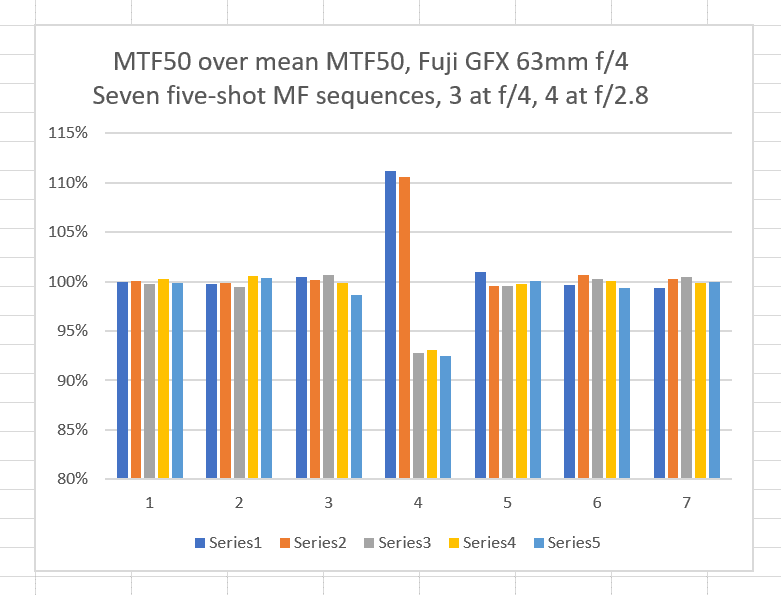Fuji came out with a new firmware image for the GFX. I downloaded it. But I had to disable the gateway antivirus in my firewall first, because it didn’t like the Fuji file:
[Added 8/10/17: The above is a screen grab of a portion of the log file of my firewall immediately after the download was blocked by the gateway anti virus software of that firewall. It does not mean, as one reader feared, that this site is infected with some kind of malware; it’s an image coming from this blog, not a warning from your anti-virus software.]
After I upgraded, I went out to do the test in the preceding post. With the Fuji 63/2.8, but not with the 32-64/4 zoom, I noticed something strange. I’d focus using the peaking method that I’ve previously advocated. Then I’d take a picture. When I went back to refocus for a second picture, I could see by the peaking pattern in the finder that the focus point had shifted. I could see this clearly at f/2.8 and f/4. It was almost invisible at f/5.6, and I could see no change at f/8 and f/11, which indicated to me that the focus point had not moved very far — the shift was increasingly covered up by DOF as I stopped down.
This didn’t happen every time, but about one time out of 2 or 3.
I went down to the test range and set up a slanted edge target which was fairly difficult to focus on with the GFX since it was too high in contrast for the camera’s overactive peaking. I made seven, five-shot series, focusing only on the first shot of each series, and leaving the focus ring alone for the next four shots. I made three sets exposures at f/4, and four sets at f/2.8. I measured the MTF50 with Imatest, and normalized each series to the average MTF50 for that series.
Here’s what came out of that experiment:
You can see that six out of the seven series showed no focus shift. The fourth series showed a shift from the second to the third shot.
Then I went upstairs and tried to repeat my findings this morning. I could not. The camera seemed to not shift focus after the first shot. I tried that 8 or nine times.
At this point, I am once more in that state I usually get to when trying to get a handle on the GFX’s focus consistency: confused. The focus shift, when they do occur, seem to be small enough that they would go unnoticed in most circumstances, but large enough that they could play havoc with some critical work, like landscapes. And think what this could do to stitched landscapes when you focus once at the beginning of capture, and expect the focus point to stay put for the whole set of images.


Leave a Reply